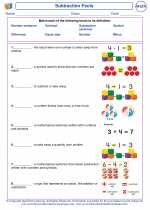Numbers
Numbers are mathematical entities used to count, measure, and label. They are essential in everyday life for tasks such as telling time, counting money, and measuring quantities. In mathematics, numbers are classified into different types, including natural numbers, whole numbers, integers, rational numbers, and irrational numbers.
Natural Numbers
Natural numbers are the counting numbers, starting from 1 and continuing indefinitely (1, 2, 3, 4, ...). They are used for counting objects and are always positive.
Whole Numbers
Whole numbers include all the natural numbers along with zero (0, 1, 2, 3, ...). They are used to represent quantities that do not involve fractions or decimals.
Integers
Integers are the set of whole numbers and their negative counterparts, along with zero (... -3, -2, -1, 0, 1, 2, 3 ...). They are used to represent both positive and negative quantities.
Rational Numbers
Rational numbers are numbers that can be expressed as a fraction of two integers, where the denominator is not zero. They can be written in the form a/b, where a and b are integers and b is not equal to zero. Rational numbers include fractions and terminating or repeating decimals.
Irrational Numbers
Irrational numbers cannot be expressed as a fraction of two integers. They are non-repeating, non-terminating decimals and cannot be written as a simple fraction. Examples of irrational numbers include the square root of non-perfect squares and constants such as π (pi) and e (Euler's number).
Understanding the different types of numbers is fundamental to many areas of mathematics and is crucial for solving various mathematical problems.
For example, in arithmetic, numbers are used for basic operations such as addition, subtraction, multiplication, and division. In algebra, numbers are used as variables and constants in equations and expressions. In geometry, numbers are used to represent measurements and dimensions of shapes and figures.
Overall, numbers play a vital role in mathematics and are essential for solving a wide range of problems in everyday life and in various fields of study.
[Numbers] Related Worksheets and Study Guides:
.◂Math Worksheets and Study Guides First Grade. Subtraction Facts
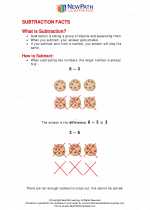
 Worksheet/Answer key
Worksheet/Answer key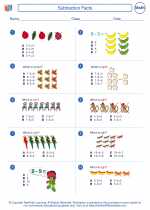
 Worksheet/Answer key
Worksheet/Answer key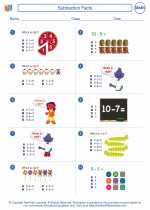
 Worksheet/Answer key
Worksheet/Answer key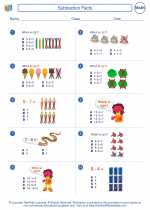
 Worksheet/Answer key
Worksheet/Answer key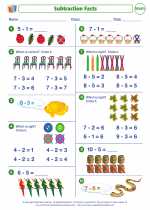
 Worksheet/Answer key
Worksheet/Answer key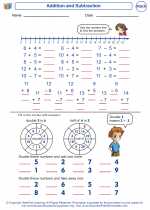
 Vocabulary/Answer key
Vocabulary/Answer key